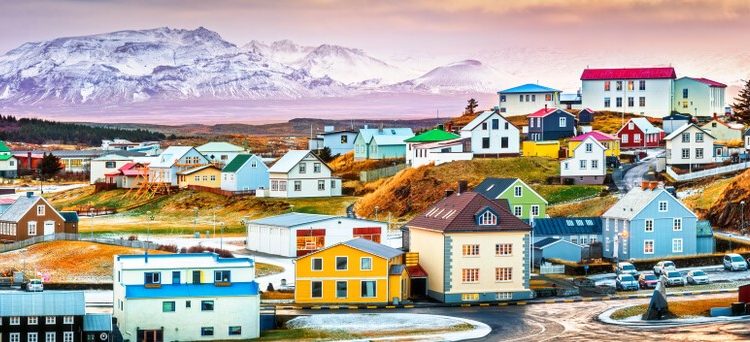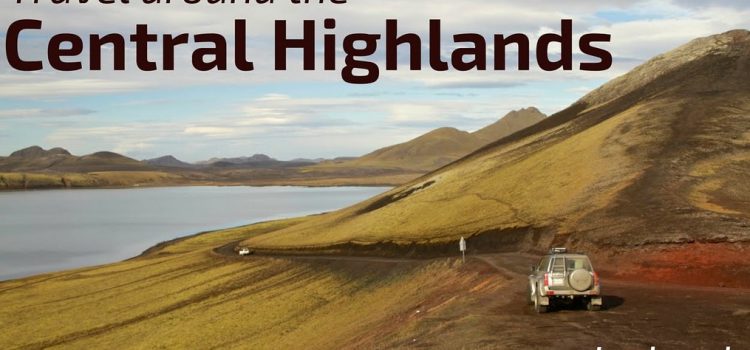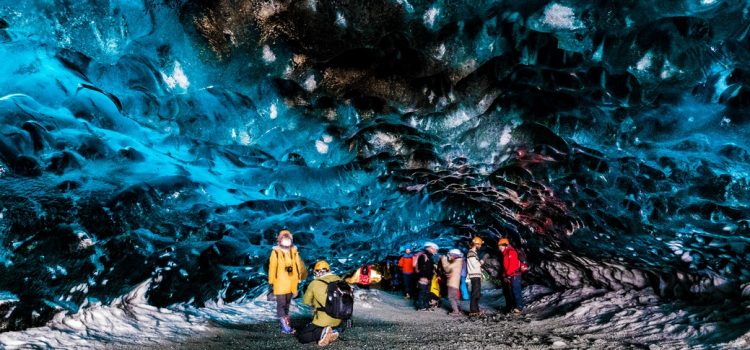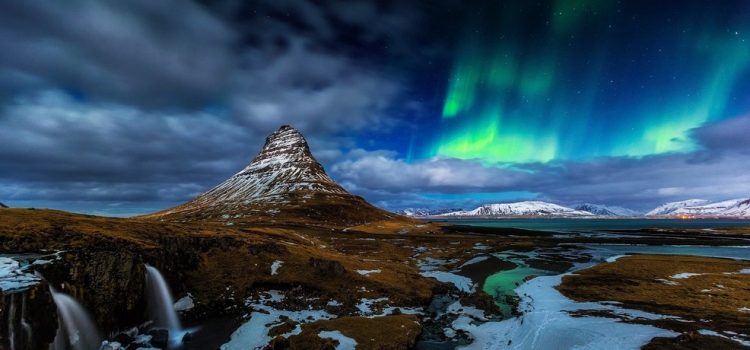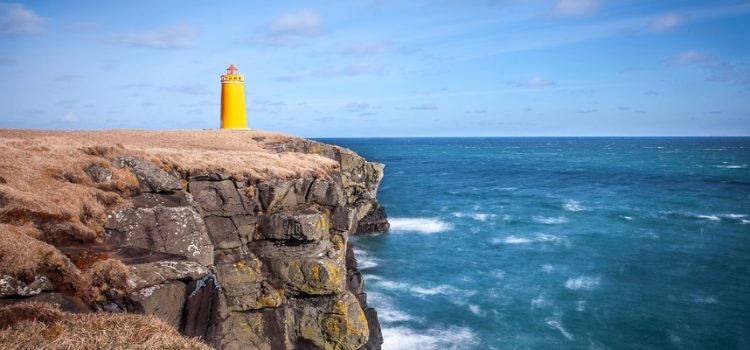West Iceland
Natural Variety
In the West and the West Fjords, one can read the geological history of Ice-land, from its formation 15-16 million years ago until about the time of the settlement in the ninth century, which is when volcanic activity ceased in the region. The oldest rock formations are found at Kögur in the West Fjords, the youngest in the inner reaches of Borgarfjörður, and the region has an unusually wide variety of natural fea-tures.
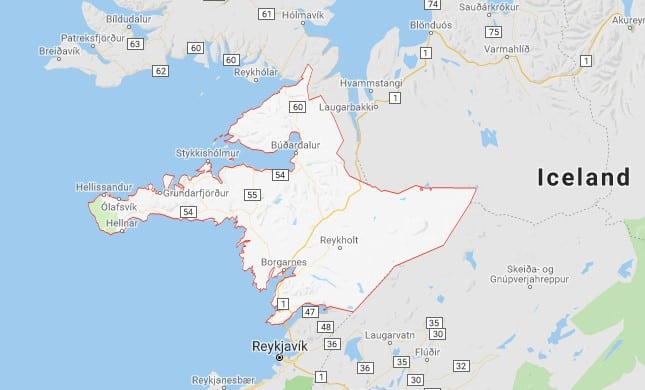
Every kind of volcano is found here, and water flows from the earth in every form, from cool, sparkling miner-al water to Europe’s most voluminous hot spring, Deildartunguhver, from which water pours at 97°C at a rate of 180 litres per second. The clearest sign of volcanism is the perfectly formed crater of Snæfellsjökull, with its glacial cap, at the tip of the Snæfellsnes peninsula, to which various mysterious powers have been attributed. This is now a National Park, and Snæfellsnes is now benchmarked as a Green Globe 21 sustainable community with emphasis on tourism.
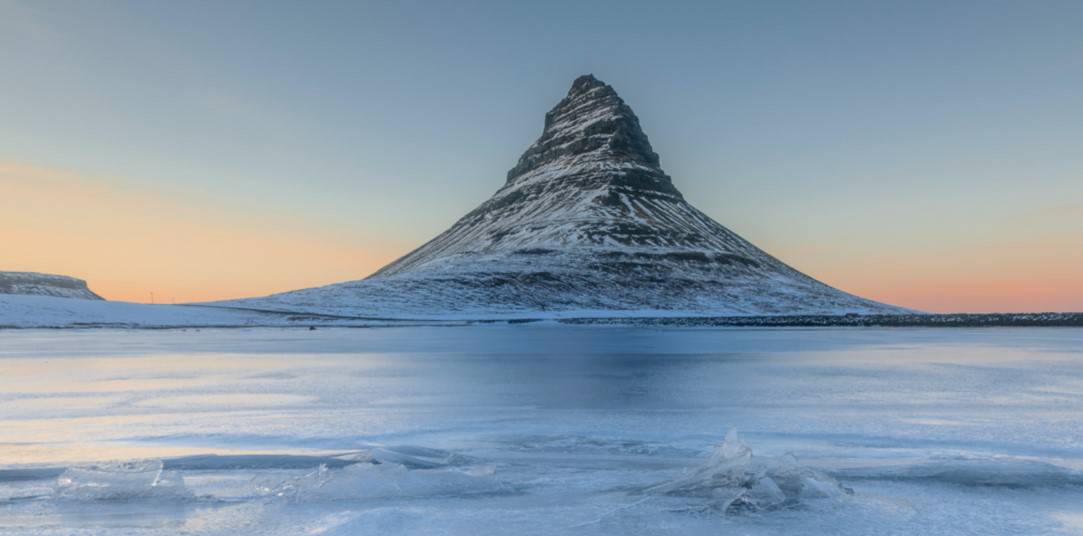
In Stykkishólmur, New York Artist Roni Horn has opened the “Library of Water”. The main room of the library features a series of 24 glass columns filled with water, originally collected as ice from various Icelandic glaciers. Words are written on the floor, reflecting in the glass.
The birdlife of the region is also varied. Breiðafjörður is a mecca for birdwatchers, who may even spot the monarch of Icelandic birds, the white-tailed eagle.
In olden times West Iceland and Breiðafjörður were flourishing agricultural regions with plentiful food resources. Many of the Icelandic sagas took place here and in the West Fjords. Historic sites in the region include Reykholt, home of the medieval chieftain/scholar Snorri Sturluson, and the town of Borgarnes with its Settlement Centre, where visitors can see two exhibitions featuring audio-taped narrative: one on the settlement of Iceland, and the other on Egill Skallagrímsson, one of the most colourful personalities of the Age of Settlement. Another intriguing destination is the reconstructed saga age farmstead at Eiríksstaðir, home of Erik the Red. Eiríksstaðir is also reputed to be the birthplace of Eiríkur’s son Leif the Lucky, who found the New World.
Two universities in Borgarfjörður have been growing rapidly in recent years: the Bifröst School of Business and the Agricultural University at Hvanneyri.

The Central Highlands
Away from It All
If you really want to get away from it all, the interior of Iceland is like nothing you have ever experienced before. The mountainous centre of the island, with its rocky deserts, jagged mountain peaks, ice caps, volcanoes, hidden valleys and hot springs, is an awe-inspiring and untouched wilderness.
In the geothermal area of Landmannalaugar, nature has painted the rhyolite mountains in yellows, greens and reds interspersed with shiny black obsidian, and weary travellers can bathe in natural hot rivers. At Kverkfjöll, steam rising at the edge of the glacier has melted a series of bizarre ice caves. In the Dyngjufjöll range, the lake Öskjuvatn is situated in a large caldera (11 km2), and the crater Víti is filled with warm water. Both lakes were created in the wake of a gigantic eruption in 1875. The green, sheltered inland valley of Þórsmörk is a favourite with travellers, who use it as a base camp for hiking into the surrounding mountains. On the barren black sands of Sprengisandur, the arctic river beauty blooms bright magenta in August.
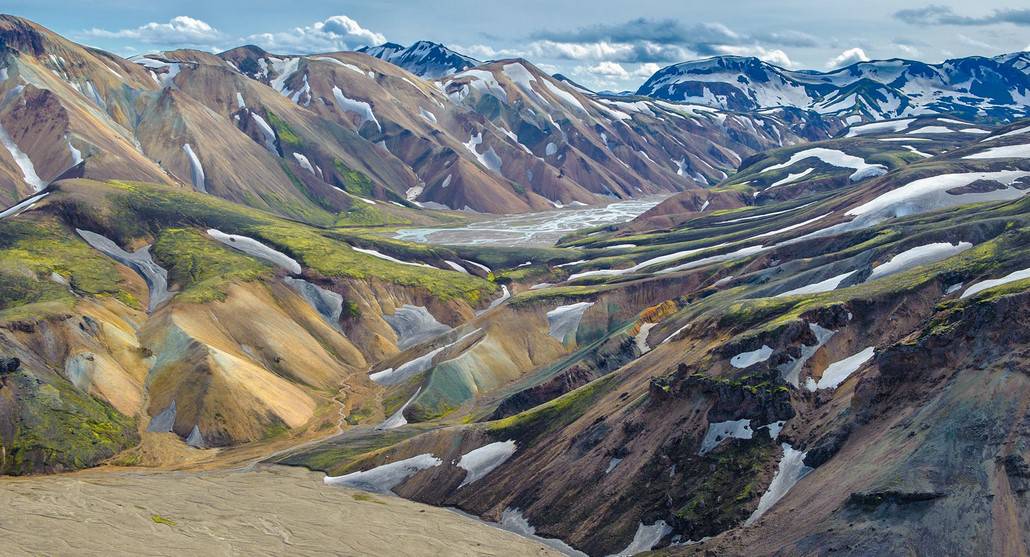
For centuries the interior was all but inaccessible. Outlaws hid for years at a time in the highlands, rustling sheep and keeping away from law-abiding folk. Fortunately, access is a lot easier today. The interior is traversed by two mountain roads, via Kjölur and Sprengisandur, which only open in the summer months, after the spring thaw.
Most highland routes involve crossing unbridged rivers, which should not be attempted without taking advice, and preferably travelling in convoy with other vehicles. Please note that if you rent a car, you cannot take it on a mountain road (classified F) unless it is a four-wheel-drive vehicle.
But the wonders of the highlands can also be seen by scheduled bus or on organised tours, which run regularly across the interior on the Kjölur and Sprengisandur roads, as well as to such destinations as Þórsmörk, Landmannalaugar, Mt. Askja and Kverkfjöll. Hiking tours are offered to many of the most popular locations in the interior. And one of the most memorable ways to see the highlands is on horseback, riding into the wide-open spaces, far from all human habitation.
East and Southeast Iceland
The East – Amazing Contrasts
In East Iceland, the visitor will be astonished by the variety and contrast of the landscape. You will find everything, from impressive fjords to friendly and peaceful fishing villages, from fertile and forested valleys to unique geological phenomena. All this is set against a background of impressive mountains and – farther away – Vatnajökull Glacier.

For the active tourist, there are superb hiking routes through verdant valleys and along high mountain ridges, both for those who prefer short hikes and for the passionate hiker who wants to go on for days and even weeks. The East Fjords are a magnificent landscape of long, narrow fjords, steep mountains and jagged peaks. This is one of the oldest regions of Iceland, which was shaped by glaciers in the Ice Age. Glacial action uncovered magma chambers that had been about 3 km beneath the surface, where zeolites had formed. These beautiful rocks can now be seen along the coast; for example at Teigarhorn. Off the shore are grassy islands that can be visited by boat.
For people who are interested in culture and fun, a visit to East Iceland will be most rewarding. In the summer, there is at least one festival a week, with a great variety of themes: history, music, golf, art, sports, hiking, art for and by young people, love, fishing – you name it! Look at www.east.is to plan your stay!
The East Fjords have many natural harbours, and in the 19th century this led to the development of fishing villages, most of which still exist. These seaside communities have a special charm, and many of them have town festivals every year. A number of museums in the East Fjords focus on various aspects of local history: World War II, French fishermen who fished off Iceland a century ago, local artists and technology. Other exhibitions highlight nature: the region’s beautiful minerals, and the reindeer that roam the eastern highlands.
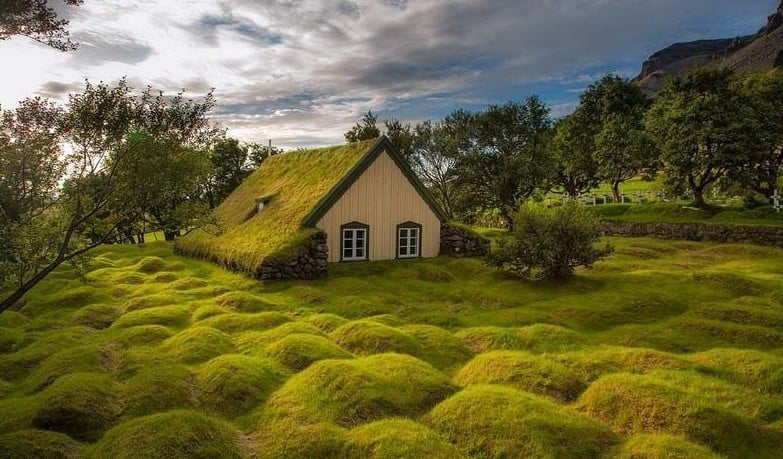
There are few places in Iceland where a human being feels as small and helpless as in the vicinity of Vatnajökull, Europe’s largest glacier. Everything here is on a grand scale: the lofty mass of the ice cap, the spectacular mountain peaks, and all the signs of volcanic activity beneath the ice.
But it is not only the craggy, rugged beauty of the region that is appealing. In places such as Lónsöræfi, Borgarfjörður eystri and elsewhere, the landscape exhibits an extraordinary palette of colours. In the realm of Vatnajökull, the land is greener, the glacier whiter, the volcanic sands blacker than anywhere else. This otherworldly environment has become a popular location for international film-makers and advertisers.
The southeast boasts a wide variety of birdlife, as most migrant birds arrive here, and many vagrant species are also carried here from mainland Europe.
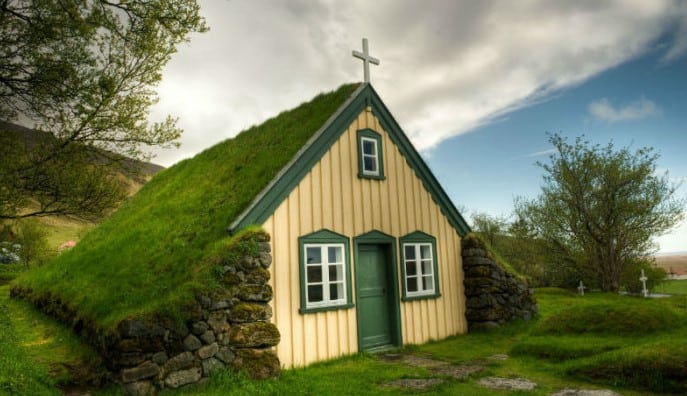
North Iceland
Summer Sun
Flourishing villages and farming communities, soaring mountain peaks, offshore islands and a landscape in formation make the North of Iceland a unique world of its own.
In the western part of the region, volcanic forces are no longer active, and since the end of the Ice Age the landscape has been moulded by rivers into smooth hills interspersed with some of Iceland’s finest angling rivers. On either side of Eyjafjörður rise high, ancient mountain ranges opening here and there into valleys, and in the north, marine erosion has created splendid cliffs. This area is popular with mountain hikers.
The Midnight Sun is an extraordinary spectacle in these northern latitudes: around the summer solstice, the sun sinks down to touch the horizon before rising again in breathtaking tones of red and gold.
Further east, other forces are at work: fresh lava flows, fissures and gullies are clues to recent volcanic activity. It is only a little over twenty years since the last eruption in the geothermal area adjacent to Mt. Krafla, and the unrest in the earth continues.

In ancient times a catastrophic glacial flood smashed through rock to gouge out the canyon of the river Jökulsá á Fjöllum and the huge sunken valley Ásbyrgi, which now form a magnificent National Park. Just a short distance away is the beautiful Lake Mývatn, famous for its picturesque natural surroundings, geothermal activity, and unique birdlife.
Most of the lowland areas have been inhabited since time immemorial by farmers and fishermen. In recent times remote spots such as the region east of Eyjafjörður, and Melrakkaslétta and Langanes in the far northeast, have become largely uninhabited, but they remain popular with travellers in search of peace and unspoiled nature.
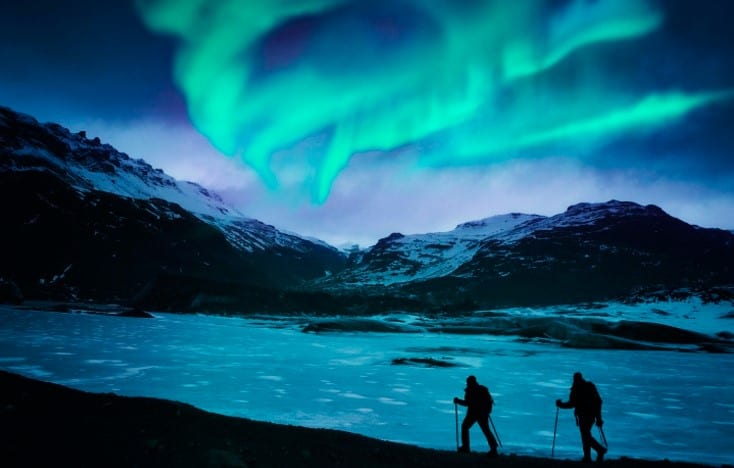
Tourist services in the region reflect aspects of local history and ways of life. In Húnavatnssýsla and Skagafjörður visitors can see the sites of many of the important events in the classic Icelandic sagas. Seals can be observed at play offshore; the Selasetur seal center in Hvammstangi is an excellent place to gain insight into seals and their way of life. Whales can be spotted off Eyjafjörður and Skjálfandi bay, and Húsavík is home to a whale museum. In the first half of the 20th century, the “Herring Boom” brought unprecedented prosperity to many Icelanders, and the atmosphere of those times is recreated at Siglufjörður, one of the leading herring ports of the time. Another interesting destination is Hafíssetur, the pack-ice exhibition in Blönduós, where visitors can learn about “the land’s ancient enemy” through a graphic and text exhibition. Tucked away in the south part of Eyjafjörður is a very original museum: The Museum of Small Things (Smámunasafnið). Another very interesting museum, located at Svalbarðseyri, is The Icelandic Folk Art Museum (Safnasafnið).
Over the centuries, Icelanders relied on the horse for all transport and farm work, and Skagafjörður is especially famous for its horses and equestrian traditions, while horseback riding tours are available all over the north. Skagafjörður also offers the thrills of white-water rafting, and at the Icelandic Emigration Centre in Hofsós visitors can learn about emigration to the New World in the 19th century, when 20% of the population headed west in search of a better life.
The Capital of the North is Akureyri, a centre of education, culture and services in Eyjafjörður fjord. Akureyri has a full summer programme of events, arts, entertainment and activities.
Reykjanes peninsula
All You Need
Discover a lunar landscape pitted with volcanic and geothermal wonders, a surf-pounded coast where lighthouses outnumber villages, and where arguably the best sunsets in Iceland can be enjoyed. This rugged peninsula of raw natural beauty also boasts abundant wildlife and several top cultural and recreational attractions, including the world famous Blue Lagoon, the Viking Ship Exhibition, Power Plant Earth, and the Leira golfcourse, one of the best in Iceland – and it’s all just minutes drive from Keflavik International Airport.
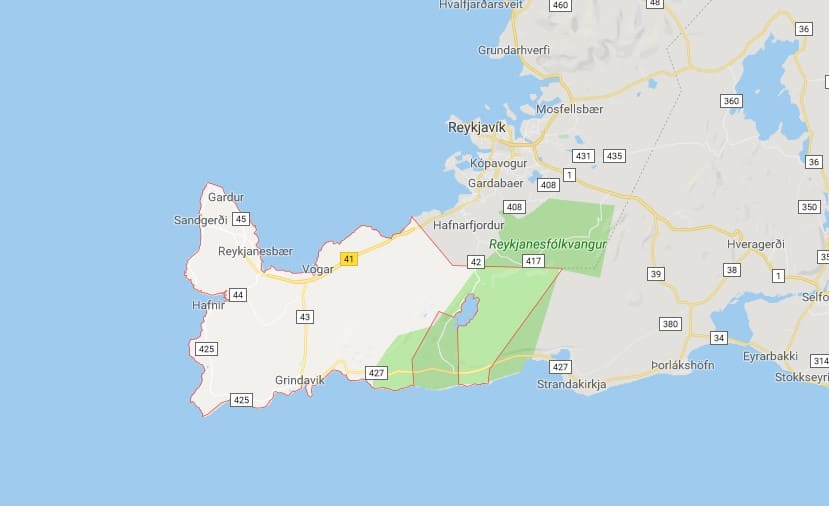
With all of this plus a choice of optional excursions and a range of hotel and guest house accommodation on the doorstep, Reykjanes is perfect for a short break offering a taste of the real Iceland.
Nowhere on earth is the junction between the European and American tectonic plates in the Earth’s crust as clear as on the Reykjanes peninsula in the southwest, and at Þingvellir: the plates diverge here by as much as 2 cm per year. But the gap is constantly being filled, as volcanoes have been erupting regularly throughout Iceland’s history.
Several high-temperature geothermal areas are found on the Reykjanes peninsula, two of which have been harnessed to generate electricity, at Svartsengi and Hengill. A further two geothermal power stations are currently under construction: Hellisheiði Power Station and Reykjanes Power Station. At Svartsengi, the Gjáin visitor centre explains geological history, and nearby is the Blue Lagoon spa, whose mineral-rich waters are internationally known for their curative powers.
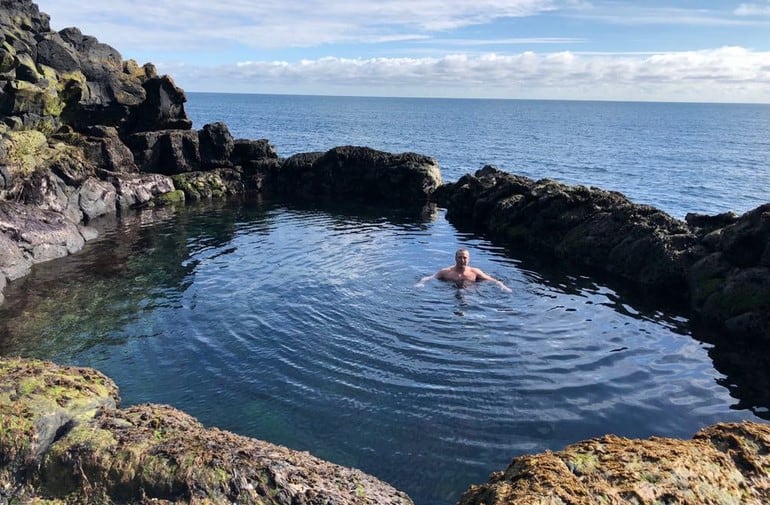
From early times, habitation on the Reykjanes peninsula has been confined to the coast, and the population lived by the fisheries. Museums in Grindavík, Sandgerði, and other locations uphold the region’s seafaring traditions. This rugged peninsula of raw natural beauty also boasts abundant wildlife and several top cultural and recreational attractions, including Krýsuvík geothermal area, popular recreational destination with many interesting hiking paths, the Viking Ship Exhibition and the Leira golfcourse.

